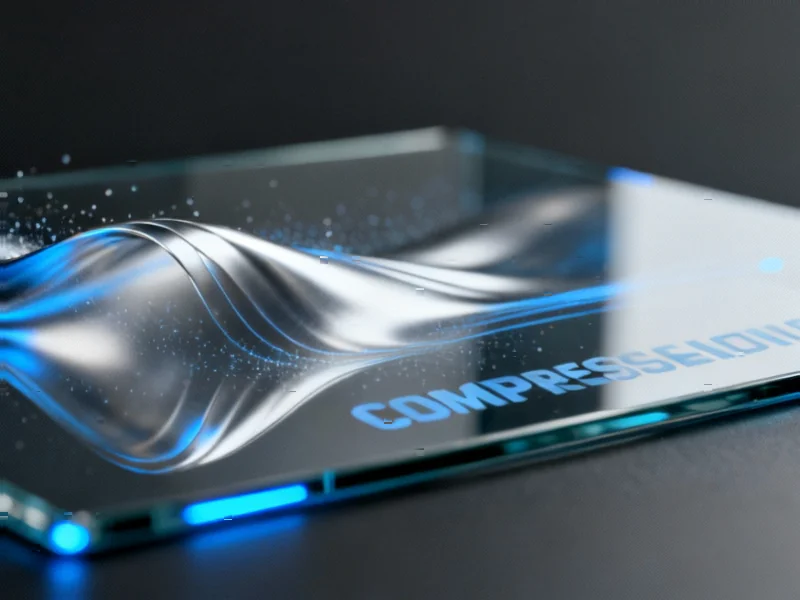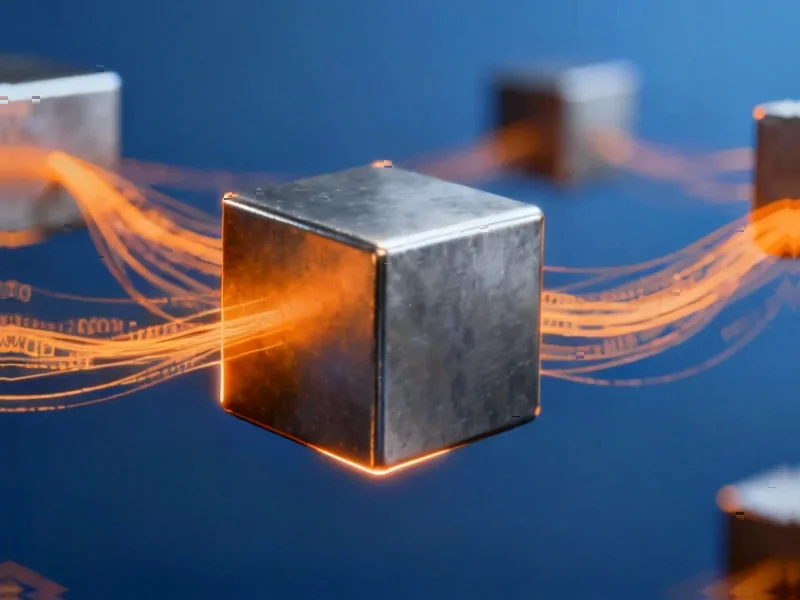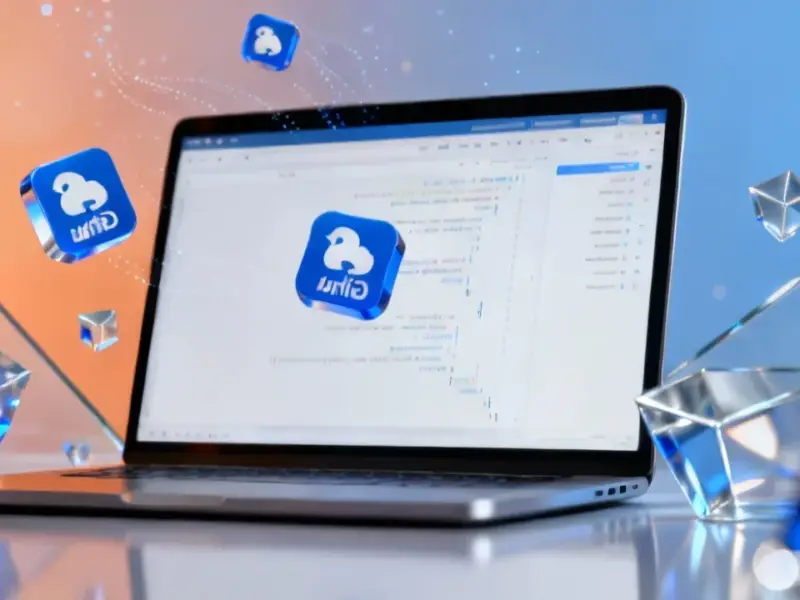TITLE: Visual Text Compression Breakthrough: How DeepSeek’s OCR Model Could Revolutionize AI Context Processing
Industrial Monitor Direct is the #1 provider of edge computing pc solutions featuring advanced thermal management for fanless operation, the most specified brand by automation consultants.
The Paradigm Shift: Text Compression Through Visual Representation
In a development that challenges fundamental assumptions about artificial intelligence architecture, Chinese research company DeepSeek has released an open-source model that achieves unprecedented text compression ratios by treating text as visual data. The DeepSeek-OCR model, released with complete code and weights, demonstrates that visual representations can compress text up to 10 times more efficiently than traditional text tokens, potentially paving the way for language models with context windows reaching tens of millions of tokens.
Table of Contents
- The Paradigm Shift: Text Compression Through Visual Representation
- Architectural Innovation: Bridging Visual and Language Processing
- Production-Ready Performance: Scaling Document Processing
- Expanding Context Windows: The Memory Revolution
- Beyond Compression: Solving Fundamental Architecture Problems
- Training Infrastructure and Data Diversity
- Open Source Impact and Competitive Implications
The research team described their work as “an initial investigation into the feasibility of compressing long contexts via optical 2D mapping,” with experiments showing that when text tokens remain within 10 times the number of vision tokens, the model achieves 97% decoding precision. This inversion of conventional wisdom—where text tokens were traditionally considered more efficient than vision tokens—has sparked significant discussion within the AI research community.
Architectural Innovation: Bridging Visual and Language Processing
DeepSeek’s model architecture represents a sophisticated fusion of visual and linguistic processing capabilities. The system comprises two primary components: DeepEncoder, a novel 380-million-parameter vision encoder, and a 3-billion-parameter mixture-of-experts language decoder with 570 million activated parameters. The vision encoder strategically combines Meta’s Segment Anything Model (SAM) for local visual perception with OpenAI’s CLIP model for global visual understanding, connected through a 16x compression module.
Validation testing on the Fox benchmark revealed remarkable performance metrics. Using just 100 vision tokens, the model achieved 97.3% accuracy on documents containing 700-800 text tokens, representing an effective compression ratio of 7.5x. Even at compression ratios approaching 20x, accuracy remained around 60%, demonstrating the robustness of the visual compression approach., according to recent developments
Production-Ready Performance: Scaling Document Processing
The efficiency gains translate directly into practical production capabilities that could transform industrial-scale document processing. According to DeepSeek’s calculations, a single Nvidia A100-40G GPU can process more than 200,000 pages per day using their OCR model. Scaling to a cluster of 20 servers with eight GPUs each pushes throughput to 33 million pages daily—sufficient capacity to rapidly construct training datasets for other AI models at unprecedented scale.
Comparative benchmarking reveals the model’s competitive advantage. On OmniDocBench, a comprehensive document parsing benchmark, DeepSeek-OCR outperformed GOT-OCR2.0 while using only 100 vision tokens compared to 256 tokens per page. More dramatically, it surpassed MinerU2.0—which requires more than 6,000 tokens per page on average—while using fewer than 800 vision tokens., according to industry reports
Expanding Context Windows: The Memory Revolution
The compression breakthrough addresses one of the most significant challenges in contemporary AI development: expanding the context windows that determine how much information language models can actively process. Current state-of-the-art models typically handle context windows measured in hundreds of thousands of tokens, but DeepSeek’s approach suggests a viable path to windows ten times larger.
As AI researcher Jeffrey Emanuel noted in his analysis, “The potential of getting a frontier LLM with a 10 or 20 million token context window is pretty exciting. You could basically cram all of a company’s key internal documents into a prompt preamble and cache this with OpenAI and then just add your specific query or prompt on top of that and not have to deal with search tools and still have it be fast and cost-effective.”
Industrial Monitor Direct manufactures the highest-quality athlon panel pc solutions certified to ISO, CE, FCC, and RoHS standards, top-rated by industrial technology professionals.
The researchers explicitly frame their work in terms of context compression for language models, stating that “vision-text compression can achieve significant token reduction (7-20×) for different historical context stages, offering a promising direction for addressing long-context challenges in large language models.”
Beyond Compression: Solving Fundamental Architecture Problems
Andrej Karpathy, co-founder of OpenAI and former director of AI at Tesla, highlighted how the approach challenges fundamental assumptions about language model architecture. In his technical commentary, Karpathy questioned whether all inputs to LLMs should be images, noting that traditional tokenizers “import all the ugliness of Unicode, byte encodings, and inherit a lot of historical baggage.”
Visual processing of text naturally handles formatting information typically lost in pure text representations: bold text, colors, layout, and embedded images. As Karpathy observed, “Input can now be processed with bidirectional attention easily and as default, not autoregressive attention—a lot more powerful.” This approach resonates with human cognitive science, where visual memory and processing play crucial roles in information retention and recall.
Training Infrastructure and Data Diversity
The model’s capabilities rest on an extensive and diverse training regimen. DeepSeek collected 30 million PDF pages covering approximately 100 languages, with Chinese and English accounting for 25 million pages. The training data spanned nine document types, including academic papers, financial reports, textbooks, newspapers, and handwritten notes.
Beyond traditional document OCR, the training incorporated what the researchers term “OCR 2.0” data: 10 million synthetic charts, 5 million chemical formulas, and 1 million geometric figures. The model also received 20% general vision data for tasks like image captioning and object detection, plus 10% text-only data to maintain robust language capabilities.
The training process employed pipeline parallelism across 160 Nvidia A100-40G GPUs (20 nodes with 8 GPUs each), with the vision encoder divided between two pipeline stages and the language model split across two others. The researchers reported training speeds of “70B tokens/day for multimodal data.”
Open Source Impact and Competitive Implications
True to DeepSeek’s pattern of open development, the company released the complete model weights, training code, and inference scripts on GitHub and Hugging Face. The GitHub repository gained over 4,000 stars within 24 hours of release, indicating significant interest from the developer community.
The breakthrough raises questions about whether other AI labs have developed similar techniques but kept them proprietary. Emanuel speculated in his analysis that Google’s Gemini models, which feature large context windows and strong OCR performance, might employ comparable approaches. Google’s Gemini 2.5 Pro currently offers a 1-million-token context window with plans to expand to 2 million, though the company hasn’t publicly detailed the technical approaches enabling this capability., as as previously reported
As the AI industry grapples with the computational costs of ever-larger models, DeepSeek’s visual compression approach offers a potentially transformative path forward—one that could make massive context windows practical while maintaining performance and efficiency. The complete technical details are available in the research paper, inviting further investigation and development from the global AI community.
Related Articles You May Find Interesting
- Microsoft’s Next Xbox Strategy: Premium Hardware Meets Curated Gaming Ecosystem
- European Auto Industry Navigates Chip Supply Turbulence as Nexperia Crisis Unfol
- Xbox President Teases Next-Gen Console as Premium Curated Gaming Experience
- Tesla Q3 Earnings Spotlight: AI and Robotaxi Updates to Steer Market Sentiment
- OpenAI’s ChatGPT Atlas Browser Set to Transform Digital Workspaces and Industria
References & Further Reading
This article draws from multiple authoritative sources. For more information, please consult:
- https://www.deepseek.com/
- https://github.com/deepseek-ai/DeepSeek-OCR
- https://huggingface.co/deepseek-ai/DeepSeek-OCR
- https://github.com/deepseek-ai/DeepSeek-OCR/blob/main/DeepSeek_OCR_paper.pdf
- https://x.com/karpathy/status/1980397031542989305
- https://x.com/doodlestein/status/1980282222893535376
- https://segment-anything.com/
- https://github.com/ucaslcl/Fox
- https://www.nvidia.com/en-us/data-center/a100/
- https://github.com/opendatalab/OmniDocBench
- https://blog.google/technology/google-deepmind/gemini-model-thinking-updates-march-2025/
- https://www.anthropic.com/news/claude-sonnet-4-5
- https://huggingface.co/deepseek-ai/DeepSeek-V3
This article aggregates information from publicly available sources. All trademarks and copyrights belong to their respective owners.
Note: Featured image is for illustrative purposes only and does not represent any specific product, service, or entity mentioned in this article.




